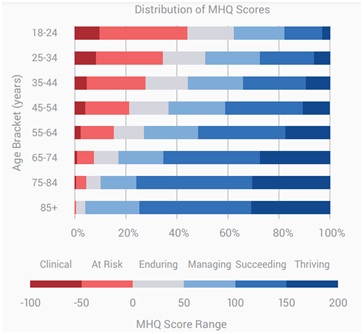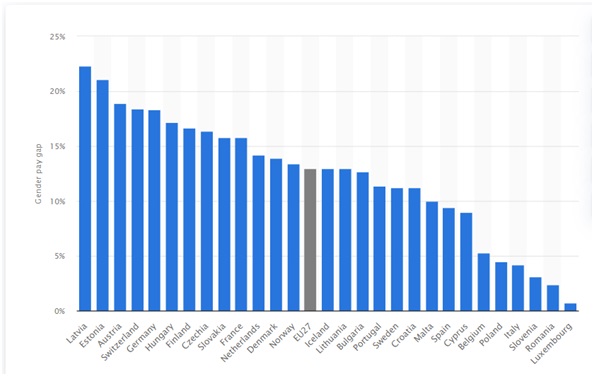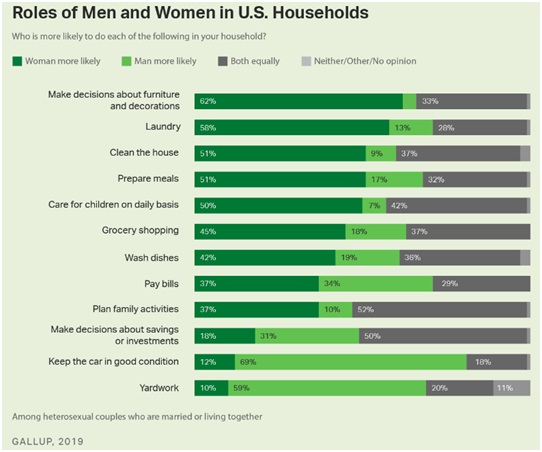A Research Paper By Monika Sałach, Burnout Coach, UNITED ARAB EMIRATES
Understanding the World as It Is and How Millennials and GenZs See It
People tend to categorize things, events, other people, elements of nature, etc., to be able to analyze and describe the separate groups with better accuracy. The same approach applies to society, where the split of the generations is roughly defined as:
- Baby Boomers: people born from 1946 to 1964
- Generation X: people born from 1965 to 1980
- Millennials: people born from 1981 to 1996
- Generation Z: people born from 1997 to 2009
- Generation Alpha: people born after 2010.
Each generation is considered to have unique characteristics, determining their behavior in daily life and the workplace. These characteristics defined for an entire generation cannot be treated as strictly applicable to each individual person, but nevertheless, they give some indication of what might shape the person’s values, life approach, and goals, and what kind of problems they could experience.
Millennials are already the largest part of the workforce, already being involved in shaping politics and society according to their values. From their youngest years, they live in the global world, with full access to information and easy communication through the Internet, which differentiates them from the previous generations. Emerging Gen Zs are even more technologically advanced; they are even defined as the first generation which does not know the world without the Internet. Considering the prevalent presence of Millennials – and increasingly of Gen Zs – in society, and the fact that I come from Generation X, I would like to get better knowledge and understanding of how they view the world and how the world treats them.
Millennials and GenZs Paper Objective
There is a multitude of research and articles, as well as stereotypes, regarding Millennials and Gen Zs. The majority considers the generations’ characteristics, values, and attitudes in a workplace context, either analyzing “Millennials in the workplace” [1] [3] [6] [8], “how to manage Millennials”[9] – [11]or “Millennial leaders”[12][13]. Such articles are certainly very useful for career or executive coaches who accompany Gen Z/Millennial workers on their paths to professional growth.
However, there is more to Gen Z/Millennials’lives than just work, and even if a description of their values or issues manifesting in their private lives is available in media or research, it is much less visible. And sadly, their world, especially considering the recent pandemic, the current economy, and global changes and conflicts, is not simple. Gen Z/Millennials’ personal (finances, relationships, life purpose) and social (climate change, unemployment, discrimination) concerns may also weigh heavily on their lives, especially when a social issue becomes personal (e.g., experiencing unemployment themselves).
The objective of this paper is to present the reality of the Gen Z/Millennial’s lives and how they are impacted by the world and society changes, their problems and challenges, in the hope to raise awareness and sensitivity of the potential coaches who may meet Gen Z/Millennials in their practice.
The Millennials and GenZs World
Gen Z/Millennials Definition
The terms Millennials and Gen Z as the names of the generations are well established in social literature and social consciousness. The exact definitions differ a little depending on the source but are consistent enough to be useful, e.g., the range of the birth year for Millennials is defined as:
- Deloitte: 1983 – 1994[1]
- Urban Dictionary: 1981 – 1991[2]
- PWC: 1981 – 1996[3]
- Pew Research Center: 1981-1996[4]
Such clean-cut categorization is required if carrying out research or applying a survey, but it is not quite as straightforward in real life, considering that we are trying to determine distinctive characteristics of large subsets of society. The Cambridge Dictionary already defines a Millennial as “a person who was born in the 1980s, 1990s, or early 2000s”, and Gen Z as “the group of people who were born in the late 1990s and early 2000s[5]. Recent surveys by Deloitte report data about Millennials and Gen Z together, indicating that they share many aspects of their traits and life philosophy[6].
In this paper, I will use the term “Gen Z/Millennial”, unless it is needed to separate both groups. If possible, I will concentrate on the younger part of the Millennial generation (below 33), as they are likely to have more in common with the current Gen Zs than with the older members of their generation.
It is important to note that the definitions of these generations, as well as their characteristics, were predominantly established and studied in the US, UK, Canada, and Australia. The notable exceptions are Deloitte Global Millennials and Gen Z Surveys, which in 2021covered views of over 14,655 millennials (born 1983 – 1994) and 8,273 Gen Zs (born 1995 – 2003) from 45 countries across North America, Latin America, Western Europe, Eastern Europe, the Middle East, Africa, and Asia Pacific[7].In 2022, the proportions were reversed, with 8,412 Millennials and 14,808 Gen Zs submitting their responses to the survey[6].
The exact percentage of answers to similar questions differs slightly from source to source and from year to year, so all results must be treated with caution. To minimize this impact, I rejected sources older than 3 years.
Finances
Note: the surveys described below were collected after the main hit of Covid, but before the current war in Ukraine, which will have a great negative impact on Europeans in the coming months and years, as2022 annual inflation in the EU is predicted to reach the 10.9%[14].
According to a 2022 Deloitte Survey,36% of Millennials and 29% of Gen Zs selected the cost of living as their greatest concern. Close to 47% of Millennials below 30 years old live paycheck to paycheck, worrying if they will be able to cover all living expenses. Despite life-work balance being one of their top priorities, 43% of Gen Zs and 33% of Millennials take up a second full- or part-time job[6].
20% of Gen Zs/Millennials are concerned about the unemployment rate and its possible impact on their own lives [6]. The perspective of not being able to earn a living is even scarier considering that many Gen Zs/millennials finish college or university with considerable debt, especially in the US, where the average cost of college tuition has more than doubled in the last 20 years [41].
This bleak financial perspective affects their plans for the future – some Gen Zs/Millennials are reluctant to start families and have children due to concerns about their ability to adequately support them, including owning a house or an apartment. Looking further, already more than a quarter of Gen Zs and even more Millennials are not confident they will be able to retire comfortably [6].
Where a Coach Can Help
Financial concerns and struggles can cause Gen Z/Millennials to reach out to coaches (Career and Life) with a multitude of issues, e.g.:
- The feeling of being stuck in an unsatisfying reality with a lack of perspective,
- Lack of life purpose and satisfying long-term goals beyond day-to-day living,
- Low self-esteem and feeling like a failure,
- Lack of job satisfaction and issues with career progress.
Whereas a coach cannot directly help with financial deficits, they can work with the clients on their confidence and motivation, setting life goals, changing careers, and finding new ways of dealing with their problems.
Mental Health
Mental health is one of the biggest concerns among Gen Z/Millennials. According to a Deloitte survey from 2022, 20% of Gen Z respondents list their generation’s mental health as a main social issue, just behind the cost of living, climate change, and unemployment[6].
Similarly concerning numbers appear in multiple reports, clearly showing a struggle among people in these generations; some of the results come from research conducted before the pandemic, so they were likely to become even worse:
- Only 45% of Gen Z report “excellent” or “very good” mental health[15]
- 38% of Millennials and 46% of Gen Z (53% of women compared to 39% of men) report that they are stressed all or most of the time[16]
- 73% of Gen Z report feeling alone sometimes or always [17]
- 68% of Gen Z report feeling significant stress about the future[17]
In the “Mental State of the World” report from 2021, the results of the self-evaluated MHQ (Mental Health Quotient), shown in Figure 1, report 43% of Gen Zs (age 18-24) and 34% of Young Millennials (age 25-34) grading their mental health as “at risk” or “clinical”, though overall perceived mental health improves with age [18].

The widespread mental health issues affect Gen Z/Millennials’ performance at work, but they remain hesitant to disclose their struggles to their employers. Nearly six in 10 Gen Z/Millennials said that they did not tell their leaders how they were feeling, and around 49% gave their employer a different reason for the absence if they took time off for mental health[16].
When a Coach Can Help
As a rule, serious mental issues should be addressed by a therapist, but clients may also approach coaches when the issues they face are not so grave or they are hesitant to contact a therapist, e.g.:
- Lack of motivation and energy, tiredness,
- The overwhelming feelings of stress and anxiety,
- Reduced performance at work and unsatisfactory results,
- Difficulties with open communication about the problems with family and managers.
Social Media
Gen Z is defined as the first generation that was born in the era of widespread use of the internet, so the digital world of social media, e-commerce, and online entertainment is as familiar to them as the physical world. However, Millennials, especially younger ones, are keeping up with Internet usage:48% of Americans in the 18 – 29 age group and 42% in the 30 – 49 group report that they go online “almost constantly” [19].99% of all users access social media through mobile devices[20].
According to a GWI report from 2020[21], the average US Millennial spends 2.5 hours daily on social media. Preferences for social media platforms change with age, with Facebook losing appeal to younger users, who are more drawn to Instagram, Snapchat, and TikTok [22]. Note that the below statistics define categories by age and not generation of the surveyed people.
A 2021 Harris Poll commissioned by Sprout Social[23] found that over 60% of Gen Zs use social media as a way to kill time during the day. On the other hand, the most important benefit of social media for Millennials (61%)is allowing them to communicate with family, friends, and acquaintances. Additionally, both generations report using social media to learn about new trends and as a source of news.
Although usage of social media is not exclusive to Gen Z/Millennials, a considerably higher ratio of their involvement and time spent on social media makes these groups more vulnerable to both positive and negative impacts.
The basic feature of social media is that posts (text, pictures, videos) trigger reactions of the readers, either in the form of icons (“likes”) or comments. Positive and numerous responses cause the author to feel content, and confident, with their thoughts or taste validated. However, if such an effect is not reached, the person is likely to feel down, plagued by lower self-esteem, feel inadequate, and socially rejected[21].
Both effects are strengthened by the fact social media allows users to reach many more people than would normally be possible, so both praise and criticism are multiplied, as are the emotional responses they elicit.
Interacting with social media automatically causes people to compare themselves with others, even if it is not done consciously. But the posted images (esp. by influencers) are carefully curated and often heavily edited [42], usually showing a person and their life as flawless and glamorous. The viewed posts form unrealistic and increasingly demanding standards that people impose on themselves, and a belief of not meeting these standards makes people feel like a failure with poor self-esteem and low self-worth[21].
Contrary to popular belief, social media users are more likely to feel alone and isolated. This effect is particularly strong among people for whom social media use is a substitute for real-life interaction.31% of Gen Zs report finding it difficult to make new friends, predominantly because of shyness (53%), not feeling a need for friends (27%) and not having hobbies or interests to meet potential new friends (26%) [17].
Most celebrities maintain a social media presence as one of the means of building their brands, and the same applies to influencers, who gather a large number of followers and fans through the social media content they post. Some followers of celebrity/influencer profiles “become attached to and invested in a media character (…) who doesn’t return the emotion. A sense of intimacy and closeness develops on one side but the other party most likely does not know the former exists”, i.e., they form a parasocial relationship [24]. Parasocial relationships are normal and, in many aspects, positive e.g., providing inspiration or reassurance, or shielding a follower from rejection. However, they can also become problematic when a follower starts treating this relationship as a private matter, demanding real contact with the object and being part of their life. Such obsessive idolization can be further detrimental to the individual’s real-life relationships and can even escalate to dangerous behavior[24] [25].
The concept of FOMO refers to the fear that a person can be left out of some rewarding experience of others during the time they stay away from social media. Perceiving it as being excluded from a group can cause lower mood, low life satisfaction, or anxiety, and be one of the reasons for forming a social media addiction, which is already estimated to affect 5% of young people [26].
When a Coach Can Help
The presence of social media in our lives is so widespread that its influence cannot be overestimated. There are multiple ways it can appear in coaching discussions, for example:
- Loneliness, feelings of isolation, missing deeper social connections
- Procrastination, lack of motivation
- Low self-esteem due to being judged, negative results of comparing themselves to social media “friends” or influencers
- Being a victim of harassment
- Addiction, need to frequently check social media
- Anxiety, depression
- Inefficient sleep pattern, trouble falling asleep
Some ways a coach can help with these social media-related issues is by helping the customer reframe their perspective, find healthy sources of self-esteem, and create a healthier relationship with social media use.
Discrimination
Despite increasing awareness of social issues and the importance of values in the lives of Gen Z/Millennials, the world they live in is far from perfect, and Gen Z/Millennials still experienced discrimination along multiple axes. According to a 2021 survey among Gen Zs performed by Ten Spot (shown in Figure 2), 86% of Gen Z workers say they experienced discrimination or bullying at work, especially sexual harassment and anti-LGBT+ discrimination[27].

Racism
Millennials in the US are the most racially and ethnically diverse generation, considered a “post-racial” generation with less prejudice against racial or ethnic minorities. Such a view is supported by many surveys asking hypothetical questions about their beliefs and actions; however when it comes to the practical aspects of life such as roommate-seeking, the picture changes. An experiment by scientists from Elon University in 2020[28] showed that using names (female only) signaling racial backgrounds significantly impacted the response rate to inquiries about room rental. As shown in Figure 3, names suggesting the applicant was a white or second generation (i.e., suggesting being born in the US by using an English surname)Indian got a 100% response rate, with the response rate decreasing for names suggesting Chinese or Latina origins or first-generation immigrants, with the lowest response rate of 63% for applicants perceived as Black.

At least one in five respondents of a 2021 Deloitte survey say they feel personally discriminated against “all of the time” or frequently because of an aspect of their backgrounds [29]. A quarter feels they have experienced discrimination by their governments, and approximately the same number feel they have been targeted on social media. 34% of Millennials and 38% of Gen Zs believe racism in the workplace is systemic. Such results are not restricted to the US – in a 2021 survey in New Zealand,60% of Gen Zs / Millennials report systemic racism in society in general, around 50% in the media and political system, 45% in the police force and 28% in the workplace[30].
Gender Discrimination
Gender discrimination still affects the personal and professional lives of people of all ages, not only Gen Z/Millennials. The extent and impact vary from country to country but still take their toll everywhere.
Gender discrimination is particularly visible in the workplace. Women are still paid less than their male counterparts in the same positions; according to Pew Research Center analysis[31], US Millennial women made 2020 93% of what men earned (84% of the global population). To some extent the gap is due to the overrepresentation of women in low-paying occupations, taking a break from a career after giving birth, or reducing the number of working hours afterward, but lower salaries happen even for women with the same education and experience as men.
The gender pay gap situation differs by country. This is illustrated in Figure 4, which shows results for the European Union [32].

Gender discrimination expands to family life also, where Millennial women would expect the most understanding from their partners. According to a Gallup poll from 2019, the split of household chores confirms the traditional stereotypes, e.g., more than 50% of respondents said that the woman in their household is more likely to do laundry, clean the house, prepare meals and care for children on a daily basis [33]. However, this does not mean that in the remaining 50% of households, the work is done by men –they are more likely to prepare meals in 17% of cases or take care of children in only 7%. In only 30-40% of households are the tasks equally shared between the couple. This data is shown in Figure 5. It is worth noting that looking at only women’s responses paints a much darker picture, showing that they see their contribution to be larger than perceived by their partners[33].

The Gallup poll was conducted on couples above 18 years old, but it showed no impact of age on the reported split of the daily chores. Regardless of the fact that most Millennial women are employed full-time and live in dual-career couples (78% of US Millennials), they still bear the heaviest burden of caring for children and running the household, frequently paying for this with constant fatigue or depression.
Despite increasing awareness about sexual harassment, e.g., thanks to the #MeToo movement, women are still not safe in the social and work context. According to the 2018 survey by Stop Street Harassment, 38% of Millennial women and 28% of Gen Z women claim they have been a victim of sexual harassment in public, ranging from verbal harassment and unwelcome touching to sexual assault [34]. In a similar survey in the UK[35], the number of women reporting sexual harassment on the streets rose to 80%. 48% of women of all ages said that they were sexually harassed at work. According to the same research, 70% of women and only 53% of men consider sexual harassment to be a major problem in the workplace.
Gender Identity and Sexual Orientation Discrimination
Topics related to sexual and gender identity and discrimination are heavily dependent on the country, culture, and religion a person lives in. What is clearly visible in the US and is likely to apply to the rest of the world thanks to overall increasing awareness, is that the percentage of people identifying as LGBT+ is on the rise. According to a Statista poll from 2020[36], 3.8% of Millennials and 9.1% of Gen Zs in the US identified themselves as non-heterosexual or non-cisgender. But even with such a wide presence of LGBT+ persons in the US, and with to some extent supporting the law, immunity against discrimination is not guaranteed. 10% of Americans would oppose laws protecting trans people from discrimination in jobs, housing, or public spaces; 60% say that gender is determined by the sex assigned at birth, and 38% say that society went too far in accepting transgender people[33]. This opens the door to continuing discrimination – around 36% of LGBTQ Americans reported facing discrimination in the previous year[37]. Discrimination at work is widespread and manifests in different ways: lower salaries despite the same education, higher unemployment rate, bullying, harassment, or disproportional rejections in hiring[38].
When a Coach Can Help
The multitude of cases of discrimination that Gen Z/Millennials can result in many possible issues that may require a coach’s help to be overcome. It is worth noting that in this case, a coach must also be alert if the person would benefit from consulting a psychotherapist, but also if a particular case should be raised to authorities.
The issues faced by people because of discrimination affect their well-being and may surface in coaching, e.g.:
- Depression, mental health issues,
- Frustration, anger, stress,
- Isolation, feelings of being excluded from society or a group (LGBT, race),
- Fear of or experienced harassment or assault,
- Shattered relations with family and “friends”, lack of social support (LGBT),
- Low-paid jobs, frequent changes, or unemployment,
- Unsatisfying career and smaller possibilities for advancements
- Forced covering identity to fit in the workplace (LGBT)
- Lack of motivation, withdrawal, low self-esteem,
- Feeling overworked, tired, burned out, lower relationship satisfaction (women),
- Imposter syndrome (esp. women),
- Increased drug and alcohol use.
Challenges of Early Adulthood
According to psychologist Jefferey Arnett[39], we can define 2 stages of a transition from Adolescence to Adulthood: Emerging Adulthood when people are 18 – 25 years old (so happens this is exactly Gen Z) and Young Adulthood for ages 26 to 40 years old (coincidentally current Millennials).
Both stages of entering adulthood are the first big transition people experience in their lives. Each such transition consists of 3 steps: ending the previous lifestyle, deciding the new direction, and starting anew. Each of the steps involves both internal and external changes. Because of the internal change, the person stops being an adolescent or a young adult, with their characteristic approach to life, patterns of spending free time, dependences, values, and beliefs, and has to find their own way in the world. The internal change is both a trigger and an effect of an external change – getting their first job, starting a fully independent life, forming a more stable relationship, and starting a family.
Emerging adulthood transition is the time of defining one’s own identity in the face of all possibilities and life choices, as well as under the impact of previous experiences and parents or school. Emerging adults explore relationships, values, first jobs, and new places to live, but they are far from achieving stability (e.g., young adults in the US have the highest migration rate[39]). This is typically when they start building autonomy to define themselves as independent persons[40].
Young adulthood takes current Millennials a step further, even if they still struggle with identity or values and beliefs. They start their first job after graduation to test career choices and live independently, fully taking care of a household and managing a budget. This is also a time for forming long-term relationships and starting a family[40].
When starting adult life, all problems mentioned in the previous parts of this report become more real and personal: financial insecurities, fear of unemployment, and potential discrimination in the workplace. Once a young person becomes independent and working, there may be parental or social pressure to enter long-term relationships, start a family, and settle down[40]. All these decisions and steps are scrutinized by friends through social media and the self-confidence of the person already in stress can be decreased by comparison to other “successful” stories.
The step in the middle, deciding in which direction to go, frequently leads to the feeling of being stuck, frustrated and helpless, also known as a quarter-life crisis.
When a Coach Can Help
Transitioning from adolescence to adulthood is a wonderful step in life, but can be also stressful, painful, and prolonged. The coach’s help can be valuable, especially in the areas of:
- Discovering one’s own identity, values, life priorities, and life purpose,
- Setting priorities and developing plans,
- Low confidence or motivation,
- Understanding one’s own talents and goals for best career choices,
- Discovering and overcoming blockages,
- Dealing with life’s unfairness, own mistakes, failures,
- Improving relationships (partners, friends, family) and communication.
Working With a Coach Helps to Address Issues Facing Millennials and GenZs
The issues described in the paper are not specific to the Gen Z/Millennials, but these tend to be most affected because of their age, culture, values, and position in society. It was shown that a worrying percentage of Gen Z/Millennials face the problems that we hoped were diminishing in the modern world, e.g., various forms of discrimination. There also seems to be a significant increase in concerns related to the financial situation and worries about general well-being and mental health. As if it is not enough, social media affects mainly these generations in all positive and negative aspects. All these cause a large percentage of young people to experience stress, fear, low self-esteem, etc., which hopefully can be reduced by working with a coach.
References
[1] “gx-2018-millennial-survey-report.pdf.” Accessed: Oct. 22, 2022. [Online].
[2] “Urban Dictionary: Millennial,” Urban Dictionary. (accessed Oct. 22, 2022).
[3] “The impact of Millennials on the workplace.” (accessed Oct. 22, 2022).
[4] “Where Millennials end and Generation Z begins | Pew Research Center.” (accessed Oct. 22, 2022).
[5] “Cambridge definition: Millennial.” (accessed Oct. 22, 2022).
[6] “deloitte-2022-genz-millennial-survey.pdf.” Accessed: Oct. 22, 2022. [Online].
[7] “In its 10th year, the Deloitte Global Millennial and Gen Z Survey reveal two generations pushing for social change and accountability | Press Release,” Deloitte. (accessed Oct. 22, 2022).
[8] “Generational Differences At Work Are Small. Thinking They’re Big Affects Our Behavior,” Harvard Business Review, Aug. 01, 2019. Accessed: Oct. 22, 2022. [Online].
[9] “Leading by Generation: Tips for Managing Gen Y and Z – business.com.” (accessed Oct. 22, 2022).
[10] PricewaterhouseCoopers, “The impact of Millennials on the workplace,” PwC. (accessed Oct. 24, 2022).
[11] “7 Surprising Traits That Make Millennials Excellent Employees.” (accessed Oct. 24, 2022).
[12] “How to Effectively Coach Millennial Leaders,” Apr. 29, 2022. (accessed Oct. 24, 2022).
[13] “Millennials and Modern Leadership Styles,” business.com. (accessed Oct. 24, 2022).
[14] L. Hurst, “Record inflation in Europe: How does each country compare?” Euronews, Oct. 19, 2022. (accessed Oct. 24, 2022).
[15] “deloitte-2022-genz-millennial-mh-whitepaper.pdf.” Accessed: Oct. 24, 2022. [Online].
[16] “Millennials, Gen Z and mental health | Deloitte Global.” (accessed Oct. 24, 2022).
[17] “3 Things Making Gen Z the Loneliest Generation | Psychology Today Canada.” (accessed Oct. 24, 2022).
[18] “Mental State of the World 2020”.
[19] “About three-in-ten Americans go online ‘almost constantly,’ but this varies greatly by age | Pew Research Center.” (accessed Oct. 24, 2022).
[20] “How Many People Use Social Media in 2022? (65+ Statistics),” Backlinko, Oct. 10, 2021. (accessed Oct. 24, 2022).
[21] T. Leamey, “Social Media May Be Affecting Your Mental Health. Here’s How to Tell,” CNET. (accessed Oct. 24, 2022).
[22] K. Schaeffer, “7 facts about Americans and Instagram,” Pew Research Center. (accessed Oct. 24, 2022).
[23] S. C. Team, “How Gen Z and Millennials Use Social Media—and How It Can Help You,” Newsweek, Jan. 28, 2022. (accessed Oct. 24, 2022).
[24] S. O’Sullivan, “The Internet Is Obsessed With Parasocial Relationships.” (accessed Oct. 24, 2022).
[25] “What Are Parasocial Relationships? Inside the Social Media-Fueled Phenomenon,” Prevention, Jan. 23, 2022. (accessed Oct. 24, 2022).
[26] “Anxiety, loneliness, and Fear of Missing Out: The impact of social media on young people’s mental health | Centre for Mental Health.” (accessed Oct. 24, 2022).
[27] “Gen Z employees are being bullied and harassed at work | Employee Benefit News.” (accessed Oct. 24, 2022).
[28] S. M. Gaddis and R. Ghoshal, “Searching for a Roommate: A Correspondence Audit Examining Racial/Ethnic and Immigrant Discrimination among Millennials,” Socius, vol. 6, p. 2378023120972287, Jan. 2020, doi: 10.1177/2378023120972287.
[29] “In its 10th year, the Deloitte Global Millennial and Gen Z Survey reveal two generations pushing for social change and accountability | Press Release,” Deloitte. (accessed Oct. 24, 2022).
[30] “New Zealand: perception of racism among millennials and Gen Zs 2021,” Statista. (accessed Oct. 24, 2022).
[31] A. Barroso and A. Brown, “Gender pay gap in U.S. held steady in 2020,” Pew Research Center. (accessed Oct. 24, 2022).
[32] “Gender pay gap in Europe by country 2020,” Statista. (accessed Oct. 24, 2022).
[33] G. Inc, “Women Still Handle Main Household Tasks in the U.S.,” Gallup.com, Jan. 29, 2020. (accessed Oct. 24, 2022).
[34] “Sexual Harassment Statistics | Spivak Law.” (accessed Oct. 24, 2022).
[35] G. Inc, “U.S. Men Less Concerned Than in 2017 About Sexual Harassment,” Gallup.com, Mar. 18, 2019. (accessed Oct. 24, 2022).
[36] “Americans who identify as LGBT, by generation 2020,” Statista. (accessed Oct. 24, 2022).
[37] “The State of the LGBTQ Community in 2020,” Center for American Progress. (accessed Oct. 24, 2022).
[38] “Working beyond the gender binary | Gender and the Economy.” (accessed Oct. 24, 2022).
[39] “The Big Challenge: Jumping From Adolescence Into Adulthood | Psychology Today.” (accessed Oct. 22, 2022).
[40] “Lifespan Development: Chapter 9 – Early Adulthood.” (accessed Oct. 22, 2022).
[41] “A Look at College Tuition Growth Over 20 Years” (accessed Nov. 2, 2022)
[42] City University London. “90% of young women report using a filter or editing their photos before posting.” ScienceDaily. ScienceDaily, 8 March 2021.

/iStock-1395144844_blog.jpg#keepProtocol)


